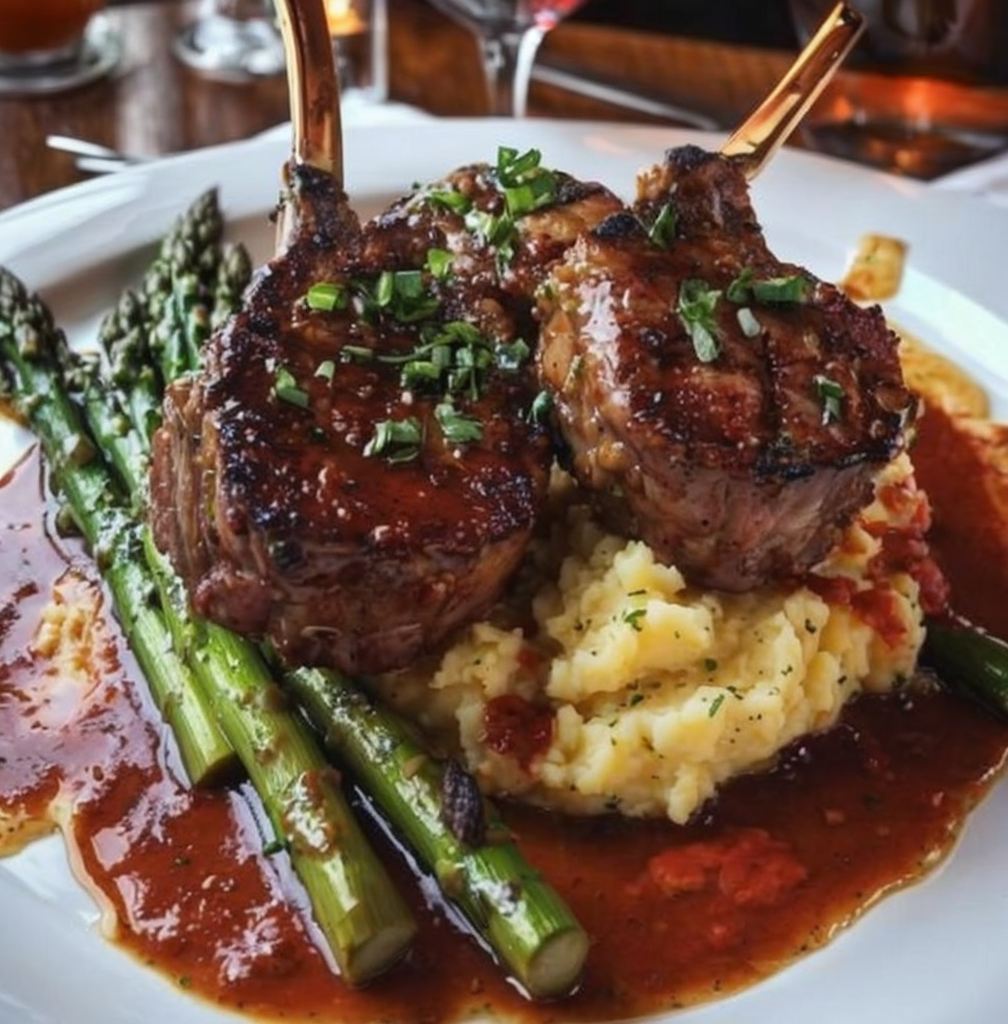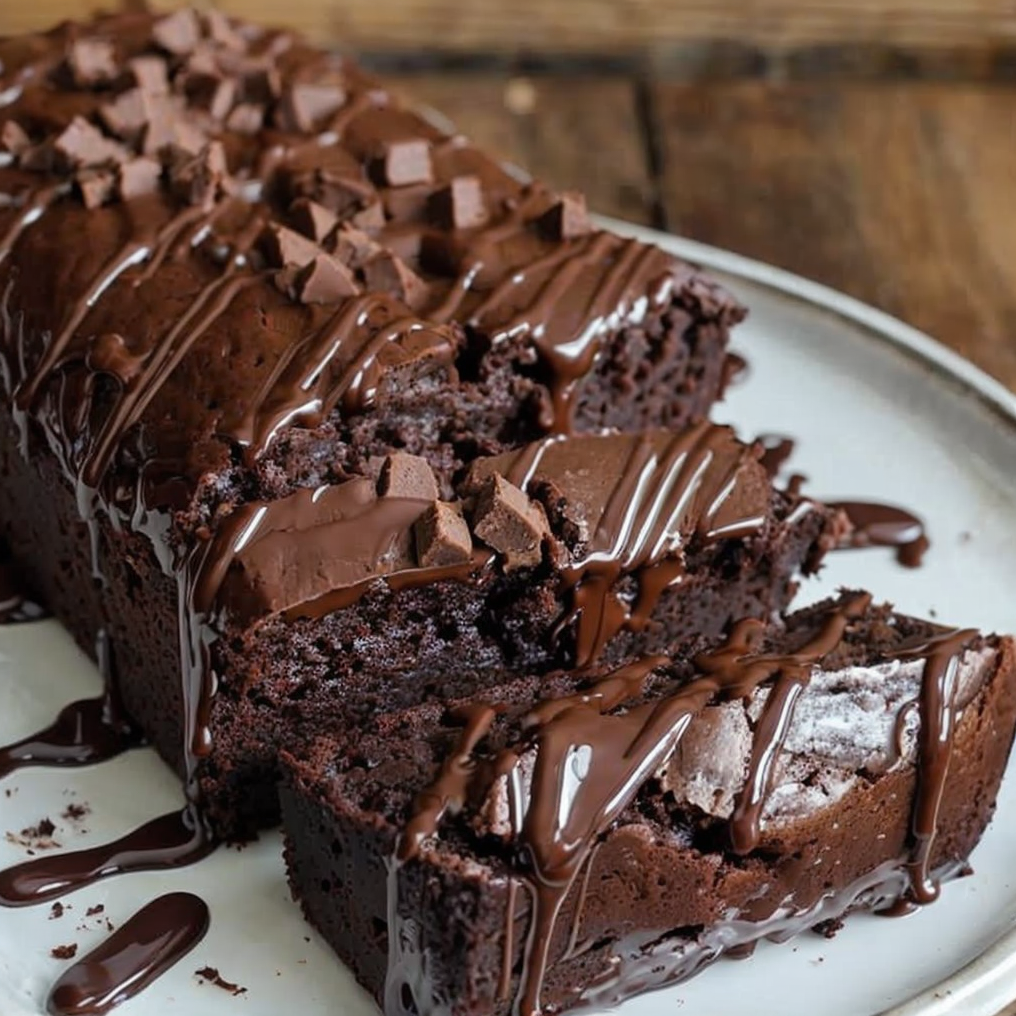Gourmet Lamb Chops with Lobster Mashed Potatoes and Asparagus: A Decadent Delight
Indulge in a truly luxurious dining experience with our gourmet lamb chops accompanied by creamy lobster mashed potatoes and crisp, tender asparagus. This dish promises an explosion of flavors that will tantalize your palate, making it an ideal choice for a special occasion or intimate dinner. Each succulent lamb chop is seasoned to perfection, while the buttery lobster mashed potatoes offer a unique twist, blending rich, savory notes that elevate the classic mashed potatoes into something extraordinary. The asparagus not only adds a vibrant green color to the plate but also brings a satisfying crunch that contrasts beautifully with the other components.
The combination of tender lamb, rich lobster, and fresh asparagus provides an elegant harmony of tastes and textures. Picture the juicy, perfectly cooked lamb chops paired with silky, luscious lobster potatoes and the snap of freshly sautéed asparagus. This gourmet dish not only impresses your guests but also fills your home with an inviting aroma that signals a culinary adventure. Whether you’re celebrating a milestone or simply want to treat yourself, gourmet lamb chops with lobster mashed potatoes will certainly leave everyone craving more.
Quick Recipe Highlights
- Flavor Profile: Experience the delightful blend of savory lamb, buttery lobster, and the earthiness of asparagus for a well-rounded taste.
- Texture: Savor the contrasts between the tender, juicy lamb, the smooth, rich mashed potatoes, and the crisp asparagus.
- Aroma: The heavenly scent of grilled lamb mingled with the luxurious smell of lobster will enhance your cooking experience.
- Visual Appeal: A stunning presentation with vibrant greens, deep browns, and creamy whites creates an inviting dinner plate.
- Skill Level Needed: A moderate skill level is required, making this a rewarding recipe for home cooks ready to impress.
- Special Equipment: You’ll need a grill or cast-iron skillet, a large pot for boiling, and a food processor for mashed potatoes.
Recipe Overview
- Difficulty Level: This gourmet dish falls into the intermediate category, requiring some familiarity with cooking techniques and timing.
- Category: This recipe is perfect for main courses during dinner parties, celebrations, or holiday meals.
- Cuisine: The preparation brings together influences from Mediterranean and fine dining traditions, creating a fusion of flavors.
- Cost: The cost can vary based on the quality and source of the lamb and lobster, but expect a higher price due to premium ingredients.
- Season: Best enjoyed in spring or fall, when asparagus is in season and the weather is ideal for grilling.
- Occasion: Perfect for anniversaries, date nights, or holiday gatherings, showcasing your culinary skills.
Why You’ll Love This Recipe
This dish stands out for its remarkable taste and texture appeal. The juicy, seasoned lamb chops boast rich, meaty flavors, while the addition of lobster in the mashed potatoes creates an upscale twist that excites the palate. The crunchiness of asparagus adds a fresh contrast, ensuring each bite is varied and satisfying.
Convenience is another highlight of this recipe. While the techniques may seem complex, the steps are laid out clearly, making it achievable even for those with moderate cooking experience. You can prepare many elements ahead of time, allowing you to enjoy your guests’ company without a last-minute kitchen scramble.
Nutritionally, lamb is a great source of protein, and the inclusion of asparagus provides essential vitamins and minerals. The lobster mashed potatoes contribute healthy fats and can even support heart health, making this dish not just indulgent but also nourishing.
As a centerpiece at any gathering, these gourmet lamb chops elevate the dining experience. They foster conversations around the table with vibrant flavors and stunning presentations that guests will be thrilled to share and enjoy.
Lastly, the cost-effectiveness of this recipe is surprising given its gourmet standing. With thoughtful ingredient selection and sustainable sourcing, you can create a luxurious meal without breaking the bank. Lamb and lobster may be considered splurges, but when appropriately prepared, they deliver meaningful satisfaction and value.
Historical Background and Cultural Significance
The origin of lamb as a culinary staple can be traced back to ancient civilizations, where it was regarded not only for its flavor but also for its nutritional value. Cultures around the Mediterranean have embraced lamb in various traditions, from festive meals to everyday family gatherings, cementing its place in the culinary history.
In contrast, lobster has been revered in coastal regions for centuries, once considered food for the poor until its popularity surged among the elite. The union of both in a singular dish represents a rich tapestry of cultural significance, showcasing the marrying of humble origins and sophisticated dining experiences.
This recipe has evolved as culinary landscapes expanded, incorporating modern cooking techniques and influences from global cuisines. Many chefs today experiment with luxurious ingredients, elevating classic comfort foods to gourmet status, making exquisite dishes accessible to a wider audience.
Regional variations exist, often influenced by local seasonality and ingredient availability. This adaptability ensures that each preparation of gourmet lamb chops with lobster mashed potatoes can reflect its originating locale, enhancing its cultural significance across borders.
Ingredient Deep Dive
Lamb Chops: Historically, lamb has symbolized innocence and springtime, often featured in seasonal festivals. Nutritionally, it’s rich in protein, B vitamins, and iron. When selecting lamb, look for cuts with a good amount of marbling for tenderness. Store lamb chops in the refrigerator for a maximum of three days or freeze for long term, ensuring they remain airtight to maintain freshness. Substitutions can include pork or beef, but the flavor profile will change significantly.
Lobster: Lobster’s journey from a common catch to a luxury seafood item reflects its transition through economic status. Lobster is high in protein and omega-3 fatty acids while being low in calories. When purchasing lobster, opt for fresh or frozen alternatives that smell clean and oceanic. Store cooked lobster in a refrigerator and consume within two days. For a budget-friendly substitute, consider shrimp or crab paired with a touch of smoked paprika to mimic flavors.
Asparagus: Known for its nutritious properties, asparagus has been cultivated since ancient times, valued for its delicate flavor and health benefits, such as high fiber content. Select fresh asparagus spears that are bright green and firm. Store them upright in water or wrapped in a damp paper towel in the refrigerator. Alternatives for asparagus can include green beans or broccoli, which can provide a similar texture.
Common Mistakes to Avoid
- Overcooking the lamb can dry it out; aim for a medium-rare finish for optimal tenderness.
- Ignoring seasoning; be generous with salt and pepper to enhance the flavors of the dish.
- Boiling potatoes too long can lead to waterlogged potatoes; check for doneness early.
- Neglecting to rest the meat after cooking can prevent juices from redistributing, resulting in dryness.
- Not using fresh lobster when possible; frozen can work, but always opt for the freshest ingredients when available.
- Crowding the pan while cooking lamb will lead to steaming instead of searing; cook in batches if necessary.
- Improperly preparing asparagus can yield a rubbery texture; blanching before sautéing helps retain crispness.
- Skipping the garnish; a sprinkle of fresh herbs can elevate the dish visually and enhance flavor.
- Not tasting as you go can lead to imbalanced flavors that may require adjustments toward the end.
- Failing to serve at the right temperature can diminish the dining experience; ensure everything is served hot.
Essential Techniques
Grilling Lamb Chops: Proper grilling will result in beautifully charred and juicy outcomes. Preheat your grill or skillet to high, oil the grates lightly, and avoid flipping too often. Look for a nice crust to form before turning the chops. Common pitfalls include not allowing the meat to reach room temperature before cooking, which can impact cooking time.
Making Lobster Mashed Potatoes: Boil potatoes until tender but not mushy. Introduce lobster towards the end, ensuring gentle mashing to avoid overworking the starches. The key visual cue for success is a creamy consistency without lumps, contrasted by the vibrant pink of the lobster. Avoid adding too much liquid, as this can dilute flavor.
Pro Tips for Perfect Gourmet Lamb Chops with Lobster Mashed Potatoes
1. Always allow lamb chops to come to room temperature before cooking to ensure even cooking throughout.
2. Use a probe thermometer to check the internal temperature; target 135°F for medium-rare.
3. Rest the chops for at least 5 minutes after grilling to let juices redistribute.
4. For richer mashed potatoes, use a blend of cream and butter for a velvety texture.
5. Season your water when boiling potatoes to infuse flavors into them from the outset.
6. Don’t hesitate to add a splash of white wine to your lobster for an additional layer of flavor.
7. Serve the dish on warm plates to maintain temperature longer during dining.
8. Pair with a flavorful sauce, like a balsamic reduction, to enhance the dish’s richness.
Variations and Adaptations
For a regional variation, try using different lamb cuts such as rack or leg, which can offer unique flavor profiles. Seasonal adaptations could include replacing asparagus with seasonal veggies like peas or courgettes in the spring for freshness. Dietary modifications such as using cauliflower potatoes for a lower-carb option can keep the dish accessible for various diets. Flavor variations can include adding herbs like rosemary and thyme to elevate sophistication. For texture modifications, try adding crispy shallots on top for crunch. Asparagus can be substituted with other seasonal greens like green beans for variety. Presenting this dish family-style can enhance the communal dining experience.
Serving and Presentation Guide
When plating, consider arranging the lamb chops in a fan shape for aesthetic appeal. Create a base of lobster mashed potatoes and top with asparagus for a striking color contrast. Drizzling sauces artfully can add a modern touch. Garnish with microgreens or fresh herbs to elevate visual appeal. Serve each plate with a thoughtful balance of components to highlight the flavors. Ensure all elements are warm, and consider warm bread on the side for completeness. Proper portion control can enhance the dining experience without overwhelming the guest.
Wine and Beverage Pairing
For wine pairings, opt for a full-bodied red such as Cabernet Sauvignon or a Syrah, which complements the rich flavors of lamb beautifully. For those preferring white wine, a buttery Chardonnay pairs well with the lobster. Non-alcoholic alternatives could include sparkling water infused with lemon or a light herbal tea. When considering coffee pairings, an espresso can offer a bold contrast post-meal. Serve wines at appropriate temperatures—reds slightly cooler than room temperature, and whites chilled.
Storage and Shelf Life
To store leftovers, allow the dish to cool completely before transferring to airtight containers. Refrigerate for up to 3 days; ensure lamb is reheated thoroughly to maintain safety. For freezing, wrap each element separately, ensuring moisture is minimized. When reheating, do so gently in the oven to preserve moisture and texture, ideally using a covered dish. Signs of spoilage to watch for include off-smells or changes in color or texture.
Make Ahead Strategies
Prep the lobster mashed potatoes a day in advance and simply reheat before serving. Lamb chops can be marinated ahead to enhance flavors. Asparagus can be prepped and stored in the fridge, ready to be sautéed fresh just before serving. Create a timeline to manage your cooking session efficiently, ensuring everything comes together seamlessly. Assemble the components shortly before dinner to retain freshness, and consider adding herbs right before plating for an aromatic finish.
Scaling Instructions
To halve the recipe, use 2 lamb chops per serving, and adjust the potato and asparagus quantities accordingly. For larger gatherings, doubling or tripling the recipe is straightforward; ensure your equipment can accommodate larger food quantities. Timing may vary slightly due to increased cooking volume, so monitor closely. Take care when storing increased volumes; ensure containers are appropriately sized to maintain quality.
Nutritional Deep Dive
The macro breakdown showcases high protein content from both lamb and lobster, essential for muscle maintenance and repair. The dish also provides healthy fats from butter and lobster, essential for brain health. In terms of micronutrients, lamb supplies zinc and iron, while asparagus offers vitamins A, C, and K. Dietary considerations for this dish include protein-rich options for active individuals, but portion control may be necessary for weight management pursuits.
Dietary Adaptations
For a gluten-free adaptation, all ingredients listed are naturally gluten-free, ensuring everyone can enjoy the dish without concerns. For a dairy-free option, substitute butter with olive oil in the mashed potatoes. Making the dish vegan could entail using plant-based substitutes like jackfruit for lamb and almond milk in mashed potatoes. For a low-carb approach, swapping potatoes for cauliflower is effective. Those following a keto or paleo diet can maintain protein intake while reducing carbohydrates.
Troubleshooting Guide
If the lamb ends up tough, it is likely overcooked; aim for a shorter cooking time next time. A flavor imbalance can be quickly fixed by adjusting seasoning throughout cooking. For temperature problems, ensure your grill is preheated adequately to avoid uneven cooking. If you lack specific ingredients, timely substitutions can maintain recipe integrity—check online for quick suggestions. Lastly, if timing is off, prepare a few steps ahead, allowing flexibility in the kitchen.
Recipe Success Stories
Community feedback highlights how this dish has transformed everyday dining into memorable experiences. Readers have successfully adjusted the recipe for various dietary needs, inspiring adaptations across the board. Many have shared their own twist on the lamb seasoning, exploring global spice innovations. Success in photography captures the dish beautifully, encouraging others to recreate it at home and share their culinary journeys.
Frequently Asked Questions
Can I use frozen lobster for this recipe?
Yes, frozen lobster can be used, but thaw it properly before cooking to achieve optimal texture and flavor.
What should I serve with this dish?
This gourmet dish pairs well with light salads or crusty bread, enhancing the overall dining experience.
Can I substitute the lamb with another type of meat?
Absolutely! Pork or beef can make excellent substitutes, though they will alter the overall taste significantly.
How can I ensure my lamb chops are tender?
Use a meat thermometer to achieve the perfect doneness; resting after grilling is key to tender results.
Is this recipe suitable for meal prep?
Yes, but it’s best to store components separately and combine them fresh for the best texture.
How should I store leftovers?
Store leftovers in airtight containers in the fridge for up to 3 days. You can freeze for longer storage as well.
Can I prepare the lobster mashed potatoes in advance?
Yes, prepare them a day ahead; reheat gently before serving, adding a little cream to revive the texture.
What herbs work best with this dish?
Fresh rosemary and thyme complement lamb wonderfully, while dill pairs nicely with lobster.
Can this dish be made in a slow cooker?
While lamb chops can be cooked in a slow cooker, this method may not yield the same grilled or sautéed flavor.
What type of grill should I use?
A gas or charcoal grill works well; both provide excellent motivation for achieving beautiful sear marks and flavor.
Additional Resources
For related recipes, check out our collection of gourmet meat dishes that showcase similar techniques. Explore our technique guides for mastering grilling lamb and crafting the perfect mashed potatoes. Delve into ingredient information to uncover more about the health benefits of lamb and lobster. Our equipment recommendations highlight key kitchen tools that can make cooking a breeze. Seasonal variations also provide insights on how to employ fresh, seasonal produce in this dish.
Join the Conversation
Share your cooking experience on social media using #GourmetLambChops and showcase your culinary success. Engage with our community by sharing your photography tips for food styling. We welcome your recipe reviews and encourage you to comment about your variations on this dish, contributing to a vibrant cooking community.
The Recipe
Gourmet Lamb Chops with Lobster Mashed Potatoes and Asparagus
Serves: 4
Prep Time: 30 mins
Cook Time: 45 mins
Total Time: 75 mins
Kitchen Equipment Needed
- Grill or cast-iron skillet
- Large pot for boiling
- Food processor for mashed potatoes
- Thermometer for meat
- Non-stick saute pan for asparagus
- Measuring cups and spoons
- Cutting board and sharp knife
Ingredients
- 4 lamb chops
- 2 cups mashed potatoes
- 1 cup cooked lobster meat, chopped
- 1 bunch asparagus, trimmed
- 2 tbsp olive oil
- 4 tbsp unsalted butter
- Salt and pepper to taste
- Fresh herbs for garnishing (optional)
Directions
- Start by marinating the lamb chops in olive oil, salt, and pepper for at least 30 minutes.
- Simultaneously, boil potatoes until fork-tender, then drain and mash with butter and lobster meat.
- Heat a grill or skillet over medium-high heat and cook the lamb chops for 4-5 minutes on each side for medium-rare.
- In a hot non-stick pan, sauté the asparagus until tender-crisp, about 5 minutes.
- Plate the lobster mashed potatoes, top with lamb chops, and arrange asparagus on the side.
- Finish with fresh herbs and serve immediately.
Recipe Notes
- For a milder flavor, soak lamb chops in yogurt with spices overnight.
- Can substitute lobster with crab or shrimp for a different seafood experience.
- Adjust the quantity of asparagus based on seasonal availability and preference.




